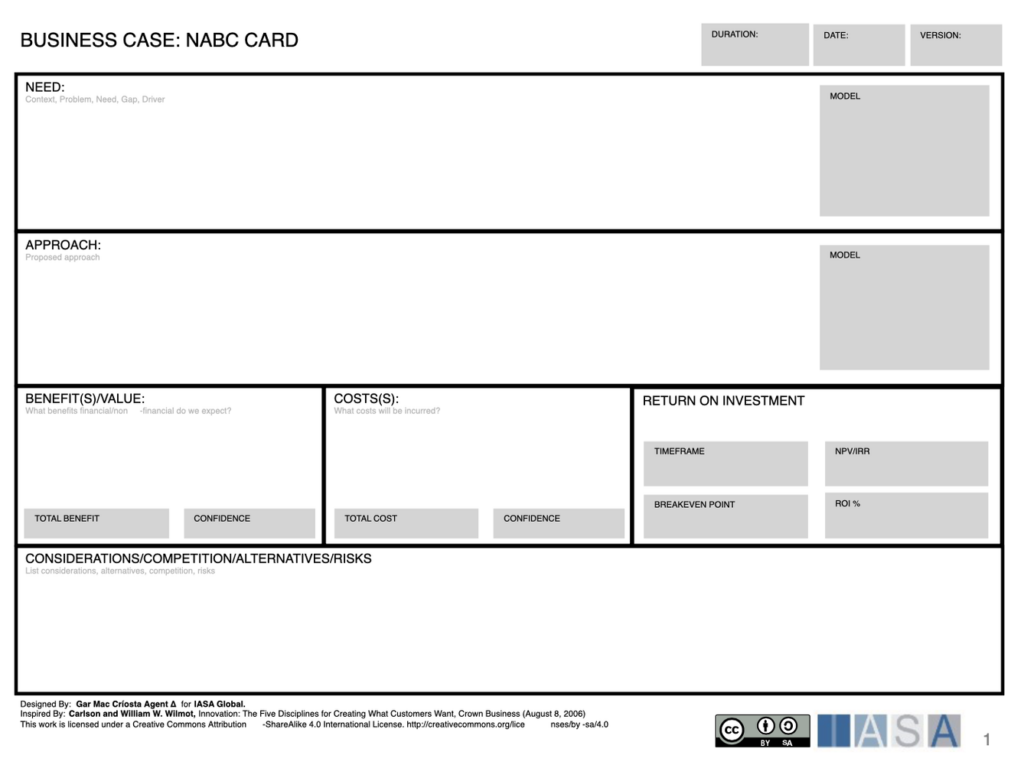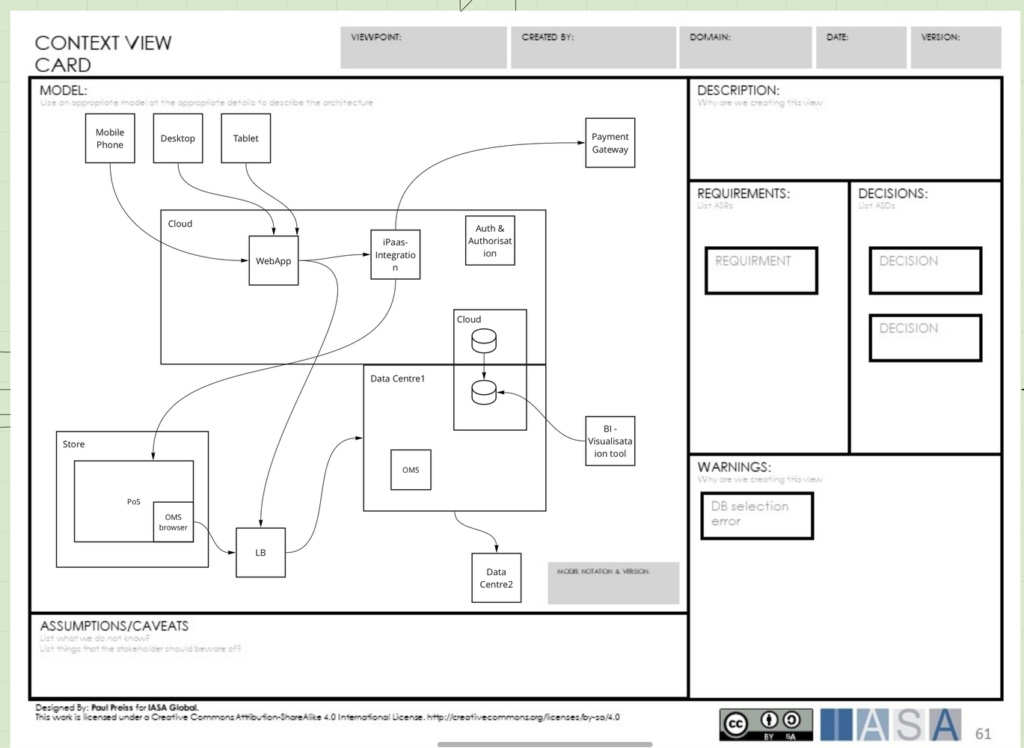
By Paul Preiss, of Iasa Global
We hear so much about AI these days. In my position, holding events, running training, helping organisations build solid architecture practices, the volume is almost deafening. It fills every feed and bubbles up in every conversation. AI will outpace humans. AI will take all the interesting jobs. AI is integrated into every aspect of business and life. Your business will fail or fall behind if you don’t have AI embedded into every component before your competition. It is amazingly frantic.
And yet… everything valuable I’ve ever seen or done has taken care, patience, kindness and an attention to real results. So how can we connect this absolute addiction to speed in adoption with the real world? It is a very, very big world. And integrating AI will take many decades if we do it at all.
Think about the sheer “real estate” we need to cover. Legacy systems, manufacturing, shipping, finance, banking, healthcare, energy sector, drilling, product design, marketing, telecommunications, electrical grid, data management, development pipelines, mobile computing applications, gaming and in each one of those we would need a deeply consider each and every impact. Think about doubling the compute power needed for all of it. Think about the access needed by systems and people to do it.
Think of how hard and long we have worked to roll out agility and cloud native concepts into our deployed infrastructure. These are still met with serious resistance. And that was just a project methodology and a deployment/design style change. The impact of AI goes way beyond this. It is not just to the structure of the systems, but the very nature of information, trust, actions and work itself.
Architectural Thinking and AI
There are a few areas where I look in a space to understand its potential impacts and how we might harness it safely to increase our business and value outcomes. And this is where we need to look at AI from an architectural perspective.
Definitions – What does AI mean?
This is the most important aspect. I deployed my first machine learning (neural net) in 2001. We have hundreds of deployed systems and business cases that have used machine learning techniques. Predictive analysis, recomendations, these are in place for many organizations. But they cost a huge amount of money to deploy and maintain. So be very clear what the business case is or isn’t and which artificial intelligence method would best support that. You will need to deeply understand the different techniques and how and where they apply.
Value – How can I benefit from it?
Architects measure things. Deployment time, sales volume, work hours, staffing costs, structural integrity, EBITDA, customer age, development hours, numbers of bugs, customer service staff satisfaction. We measure things as a way of understanding impacts, but mostly to understand value. And all of that is about real outcomes. Will those measures be the same in 6 monoths? 1 yr? 10 years? Architecture is about tradeoffs. It is about spending money on one thing over another. It is about decisions. So when you tell me to develop productivity I think that is a great measure. But I also start wondering about quality. About satisfaction. Is that productivity a measure of one person? Every person? What toolset did they use? The same goes with content generation. An AI image is neat at first? But do we get tired of them? How do I measure the value of human created? Is there profit in that? Order management, electricity use, all of these measures are valuable. So when you hear about an AI business case… do you have a business case? Are the benefits REAL?

How does hosted and vendor based AI help/hurt our business?
Foundational models may achieve something somewhat better but think about cloud… one of its biggest failures is the vendor generalization error. The thought that an organization will be willing to base its business model on a generalized vendor solution. I like to call this the SAP Fallacy.
- Does the vendor have our trust?
- Is their offering truly private?
- Is their offering truly customizable? Will those customizations be a problem for us in the future?
- Will their cost model scale in a healthy way against our business model? (think about the cost of cloud and how we were sold a ‘cheaper’ solution for decades)
- Will by business case profit support the cost of generalized vendor product and how much we will have to manage to deliver against it?
- What is the marketing hype versus reality? Do not believe sales people!
- What is the vendors hidden agenda? Where is the complexity hiding? (IT IS ALWAYS THERE)
Structural Complexity and the Time to Deploy
As you know I believe deeply in the power of technology to change our business and society for good. I am a proud technologist who functions as an equal in a business context. I have long said architecture allows us to use technology not as an enabler but as a profit creator. And now where does that show like the use of AI. I am also a realist when it comes to the time and difficulty involved in change. I also hate hype for hypes sake. Hyperbole in technology is very very bad. Everything comes with pros/cons and we need a system in place to handle this change rate. This is true of all major human endeavors. Think of child workers during industrialization. Or the horrible cost to humanity of the intensity of urbanization and how it has endangered our planet. Only now are we coming to grips with all of that structural complexity. And even that is going to require decades more commitment.
Technology and, specifically, AI is no different. While I love using AI tools to help me analyse a bit of code or auto-generate some boiler plate, I have noticed something. None of the technology lives up to the promises. I spend as much time debugging as I did. I spend as much time correcting the generated material as I do writing code. It has not made setting up my development, integration or production environments even a bit easier and has complicated a few.
Take a look at this design…

This is the design for a mobile loyalty and order management application I am building for the Tinkleman coffee shop for the BTABoK. It has an integration engine, serverless, macroservices (DDD grouped REST services), a legacy data center, a point of sale and a new react application (both native and browswer based) and that doesn’t yet get into identity and security, performance and the other views of the system. There is a LOT of deployed complexity there. So it isn’t just about help writing code… anything that would hope to do the job of a programmer or architect, would need to understand that entire deployed context AS WELL AS EVERY SINGLE LIBRARY IN IT! That is a lot of quickly changing information to give access to… how would AI impact each and every one of these elements? What would it need to be able to even ingest that information? Visual, audio, video, Q/A, and much more is what it takes me. And where does access and trust stop that from happening?
Understanding the Rules of Trust
The world has only ever had one thinking-creature. One species that is trusted to make decisions, even when they aren’t the best. Now some want to introduce a second agent into the mix. It is often difficult for me to get an organization to share its architecture diagrams and materials even when I am under contract. Why? Because humans have learned about negative actors. If I let someone have access to a component and a design I need to know they will not use that information in a negative way. Even if that way is accidental.
So, we will be breaking down this infrastructure, data, domain, code and development to understand where AI techniques (by which we mostly mean generation of content and decisions by a LLM but will include other methods). We will look at each element and what tools are being built to help with that. For example, the legacy order management system is mid-flight in transformation. That is a horribly complex environment… even the cloud application which is green field. Understanding its basic deployment takes an experienced human quite some time and a lot of trust. So how do we fit in an AI actor? Well future posts will tell us.
Future Articles in this Series
Breaking down the decisions (service style, UI, Integration methods, hosting)
AI at work in Code!
AI in content creation (application content)
Using the tools to deploy and develop…
